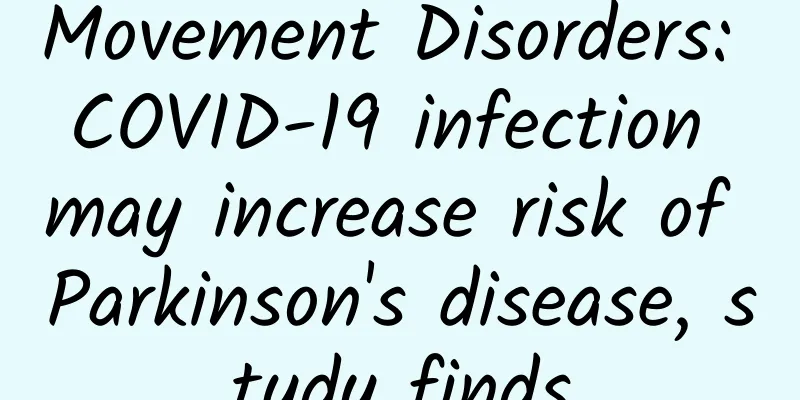Movement Disorders: COVID-19 infection may increase risk of Parkinson's disease, study finds

|
According to a recent study, the coronavirus can increase the sensitivity of mice's brains to a toxin that causes the death of nerve cells seen in Parkinson's disease. COVID-19 patients commonly report symptoms such as brain fog, headaches, and insomnia. These neurological complications following viral infections are not new, in fact, it took nearly a decade for patients to develop a neurological condition known as "post-brain Parkinson's" after the 1918 influenza pandemic. In recent research in mice, Jefferson and colleagues demonstrated that SARS-CoV-2, the virus that causes the COVID-19 pandemic, can enhance the likelihood of brain degeneration seen in Parkinson's disease. Dr Richard Smeyne, lead author of the study, said: “Parkinson’s is a rare disease, affecting 2% of the population over the age of 55, so the increased risk is not necessarily a cause for panic. But understanding how COVID-19 affects the brain can help us prepare for the long-term consequences of this pandemic.” The study, published May 17 in Movement Disorders, expands on previous findings from the Smeyne lab that suggest viruses can increase the susceptibility of brain cells, or neurons, to damage or death. In previous studies, the researchers found that mice exposed to the H1N1 influenza virus strain that caused the 2009 pandemic were more susceptible to MPTP, a toxin known to cause some of the hallmark symptoms of Parkinson's disease, most notably the loss of neurons that express the chemical dopamine and increased inflammation in the basal ganglia, a brain region critical for movement. The Danish researchers replicated the results in people, showing that influenza more than quadrupled the odds of acquiring Parkinson's within 10 years of the initial infection. It is understood that this new study used mice that were genetically modified to express the human ACE-2 receptor, which the SARS-CoV-2 virus uses to enter respiratory cells. The mice were infected with SARS-CoV-2 and then allowed to recover. Importantly, the dose used in this study was equivalent to a mild COVID-19 infection in humans, and about 80% of the infected mice survived. 38 days after the surviving mice recovered, one group was given an appropriate amount of MPTP, a dose that does not normally trigger neuronal loss. The control group was given saline. Two weeks later, the researchers examined the brains of the animals. The researchers found that COVID-19 infection alone had no effect on dopaminergic neurons in the basal ganglia. However, mice given the appropriate amount of MPTP after recovery from infection showed the typical pattern of neuronal loss found in Parkinson's disease. This increased sensitivity after COVID-19 infection is comparable to that reported in influenza trials, suggesting that both viruses may lead to an equivalent increase in the risk of Parkinson's disease. "We thought of the 'multiple hit' hypothesis for Parkinson's disease - the virus itself doesn't kill the neurons, but it does make them more vulnerable to a 'second hit' like a toxin or bacteria, or even an underlying genetic mutation," said Dr. Smeyne. Both influenza and SARS-CoV2 have been found to cause a "cytokine storm," or overproduction of pro-inflammatory chemicals. These chemicals can cross the blood-brain barrier and activate the brain's immune cells, called microglia. In fact, the researchers found an increase in the number of activated microglia in the basal ganglia of mice that recovered from SARS-CoV2 and received MPTP. While the mechanism is not fully understood, the researchers believe that the increased microglia inflamed the basal ganglia and caused cellular stress. This then lowered the threshold for neurons to withstand subsequent stress. "We are interested in the long-term consequences of viral infection," said co-author Peter Schmidt, PhD, a neuroscientist at New York University. "Dr. Smeyne is a leader in this area, and Jefferson is an ideal place to conduct this analysis." Now, researchers are planning to determine whether the vaccine can alleviate experimental increases in Parkinson's disease associated with previous SARS-CoV-2 infections. They are also testing other variants of the virus and doses that correspond to milder cases in humans. While their findings so far support a possible link between COVID-19 and Parkinson's, Dr. Smeyne points out there are some important caveats – "First, this is preclinical work. Given that there appears to be a 5-10 year lag between any changes in the clinical manifestations of Parkinson's in humans, it is too early to say whether we will see the same thing in humans." However, he says this lag can be used to our advantage. "If it turns out that COVID-19 does increase the risk of Parkinson's, this will be a major burden on our society and our healthcare system. But we can anticipate this challenge by advancing our understanding of potential 'second hits' and mitigation strategies." From cnBeta.COM |
<<: Where is the future of game consoles? Building an ecosystem is the key
>>: Three years of 5G operations: Learning from Asia’s success stories
Recommend
Case Analysis|Review of Himalaya FM's "66 Membership Day" event
1. Activity Background 1. Market conditions Pay a...
The most comprehensive Baidu keyword mining method!
Method 1: Use Baidu products to mine long-tail ke...
Kuaishou advertising landing page design tips!
When Kuaishou ads are placed, the following proce...
If a cultural relic is "sick", it can go to the "hospital"! Diseases can also be cured by "combining Chinese and Western medicine"!
Hospital for treating sick cultural relics ——Cult...
In-depth analysis of the 9.9 yuan training camp to help you understand group sales
I guess many people have seen or participated in ...
The mysterious "lone ranger" on the top of the snow-capped mountains frequently appears in the Qilian Mountains
On January 3, the Dongdahe Nature Reserve of the ...
JD.com is making profits across the board, so why did Liu Qiangdong, the top philanthropist, cut the salaries of his “brothers”?
On the morning of November 22, Liu Qiangdong issu...
Analysis of various gameplay methods: Creating an efficient App invitation plan
The friend invitation mechanism is a standard for...
Comprehensive improvements! Detailed experience of the latest WeChat version features
WeChat has been very active recently and has been...
Rare! New discovery in Hoh Xil
Hoh Xil, located on the Qinghai-Tibet Plateau, is...
Fission! Here is a complete guide to WeChat traffic "wool wool"
1. Fission! Fission! In the past six months, fiss...
Is growing taller painful? Uncovering the "little episodes" in the process of children growing taller →
Spring is the season of revival and the "gol...
Price cuts pay off: Volkswagen Phideon to launch 330TSI model, lowers price range
As the successor to Volkswagen's flagship sed...
Windows 10: A return to tradition
Windows 10 Technical Preview has been released fo...
Is low blood pressure as harmful as high blood pressure? 3 tips to help you raise your blood pressure
When it comes to blood pressure, people generally...









